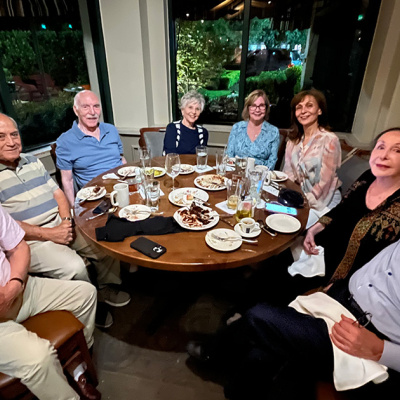100 Years Young, Big Bertha Is Finally Retired
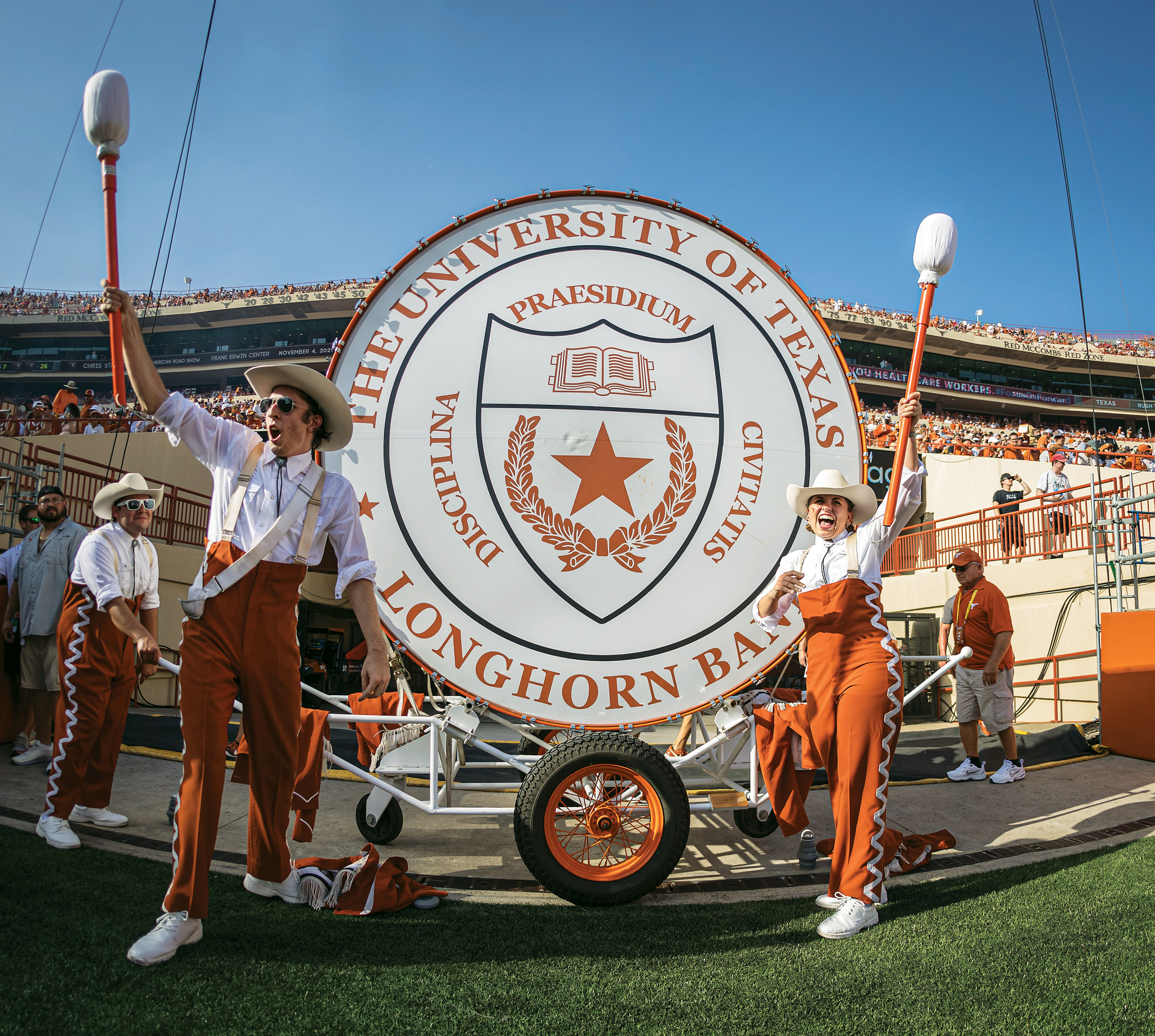
The world’s most famous one-note instrument, the iconic Big Bertha, has played her final tune.
Her swan song was performed at halftime of the Texas-Iowa State game on Oct. 15, 2022, just shy of 100 years after her first appearance for the University of Chicago on Oct. 23, 1922.
Following decades of drubbing—and with the centennial celebration approaching—the time was right to rebuild Big Bertha.
“Look, if we could all look as good as Bertha after 100 years, we’ve scored,” says Ramy Antoun, the owner of A&F Drum Co. in Austin.
Initially, Antoun was called upon to make repairs to the showband’s booming centerpiece. “I quickly assessed that this drum’s going to have to retire soon. It’s very close to a possible on-the-field hazard,” he says.
The primary concern was the massive drum shell, which is essentially a thin wooden cylinder. Exposed to the elements, it slowly lost its shape over time, which could have caused the hoops and drumheads to pop off. And then there’s the issue of all the drumming.
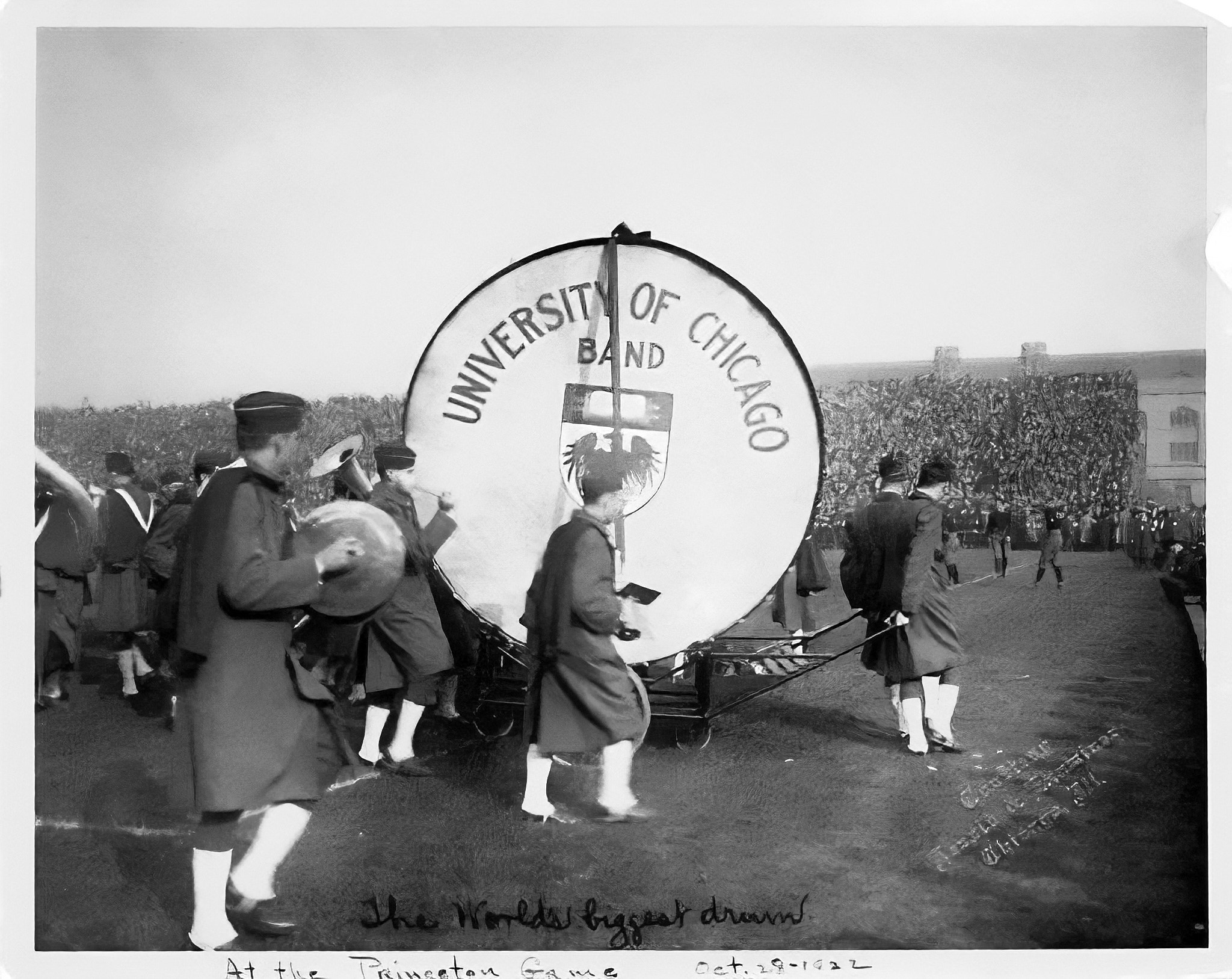
“Every time we would score, we beat it one beat for every point we had. So we used to beat Big Bertha a lot,” says Dennis Griffith, BS ’70, Life Member, a chemical engineer in Houston and former drum wrangler under legendary Longhorn Band director Vincent DiNino, Life Member.
Griffith, along with his wife, Louise Richman, BA ’69, Life Member, helped fund the construction of Big Bertha II, a task so specialized, UT spent a year trying to find another company capable of offering a competing bid.
A&F ultimately secured the bid, and Antoun likewise spent about a year researching and testing materials, choosing to build Big Bertha II using a scarce type of aluminum, one he organically treated to create a natural, burnt-orange patina. “The aluminum is interesting, because it adds clarity to the sound, almost like a filter. It’s really unique,” he says.
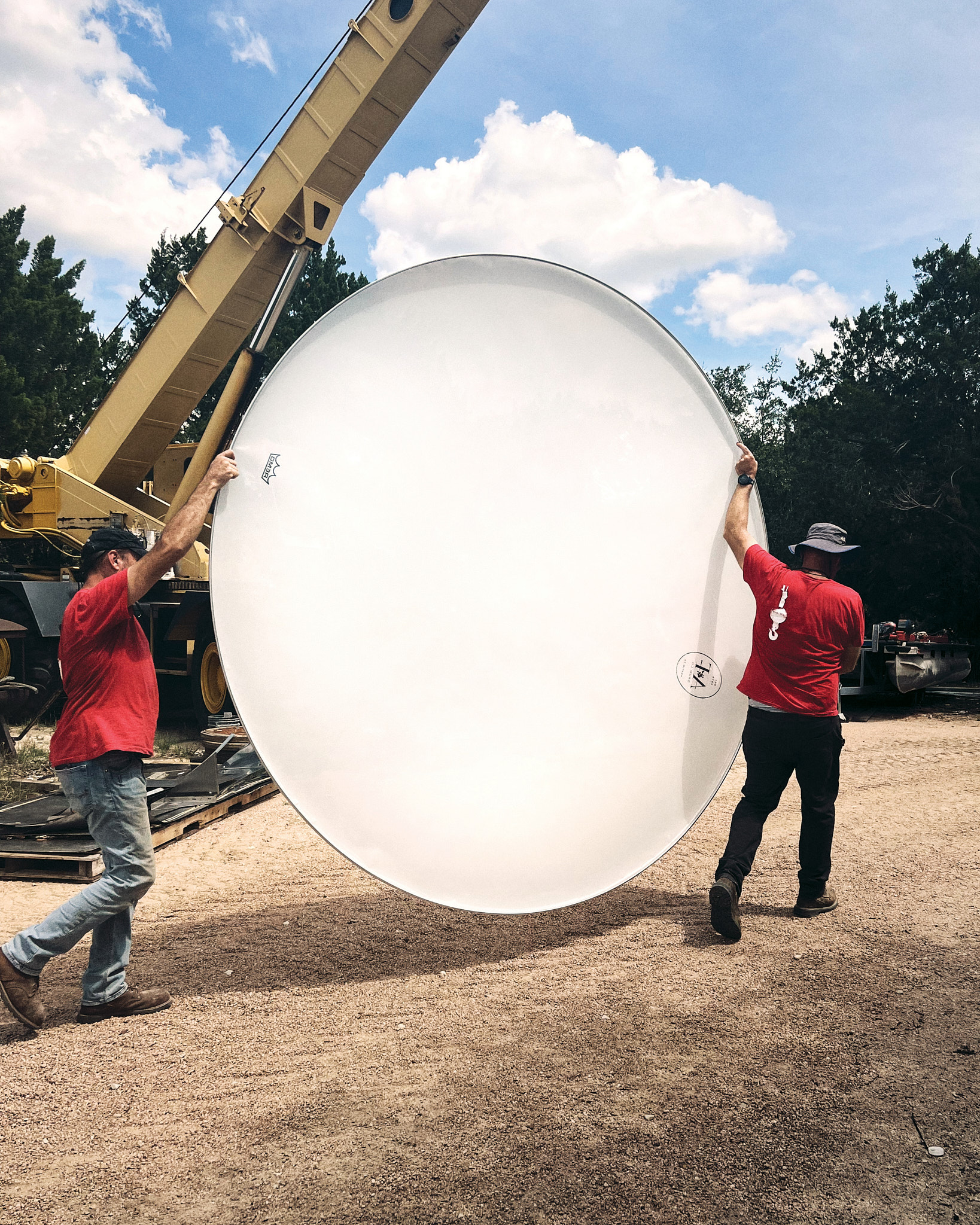
Towering over Big Bertha’s record-setting 8-foot diameter, Big Bertha II measures over 9 and a half feet, yet is 100 pounds lighter at around 400 pounds, and produces “not only a lower note, but a clearer presence of sound,” according to Antoun. “Up until now, Bertha was the lowest note you could get. But not anymore, because we made a bigger one.”
Big Bertha II’s custom cart is another revelation, one that will allow the Longhorn Band to more readily march and potentially travel again with the drum. Atop its new stand, the drum can pivot 90 degrees in place, lying flat to pass through entrances lower than 10 feet, like one in particular within Darrell K Royal-Texas Memorial Stadium.
Antoun worked with local fabricators Kentex Metals to design the cart and called upon Austin muralist Aaron Darling to paint the artwork on the drumheads. Handmade and domestically sourced, Bertha II also comes with a lifetime warranty.
“It’s made Texas strong. It’s bigger, it’s louder, it’s stronger,” Antoun says. “We build things to last.”
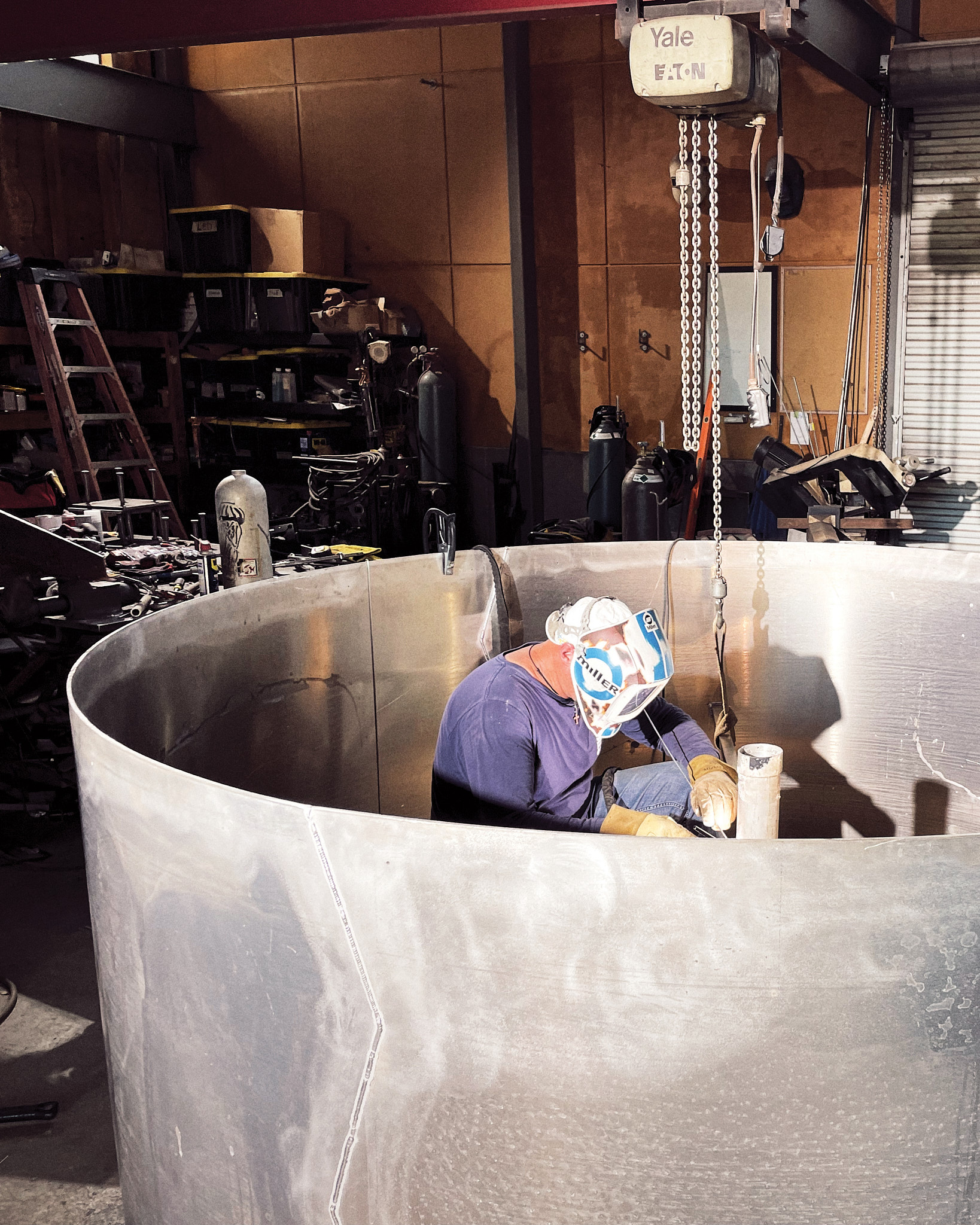
Benefactors Griffith and Richman were already celebrated for making the largest individual gift in the history of the McKetta Department of Chemical Engineering in 2016. But Bertha is bigger than that. Like the band, she represents all of Texas.
“This is not a gift for athletics or even the Longhorn Band. This is a gift for The University of Texas,” Griffith says. “It goes across the whole university; that’s the reason we’re really excited about this.”
Other Longhorns who contributed to the fundraising effort include Brien Smith, BBA ’79, MPA ’81; Anne Smith, BBA ’79; and Lisa Hannusch, BS ’86, Life Members.
The original Big Bertha now resides in the north end zone of DKR-Texas Memorial Stadium, like she once had for many years. But unlike the chain-link enclosure of the 1960s, she now has a special section inside the Frank Denius Family UT Athletics Hall of Fame.
CREDIT: Ralph Arvesen; courtesy UT Athletics, Ramy Antoun


